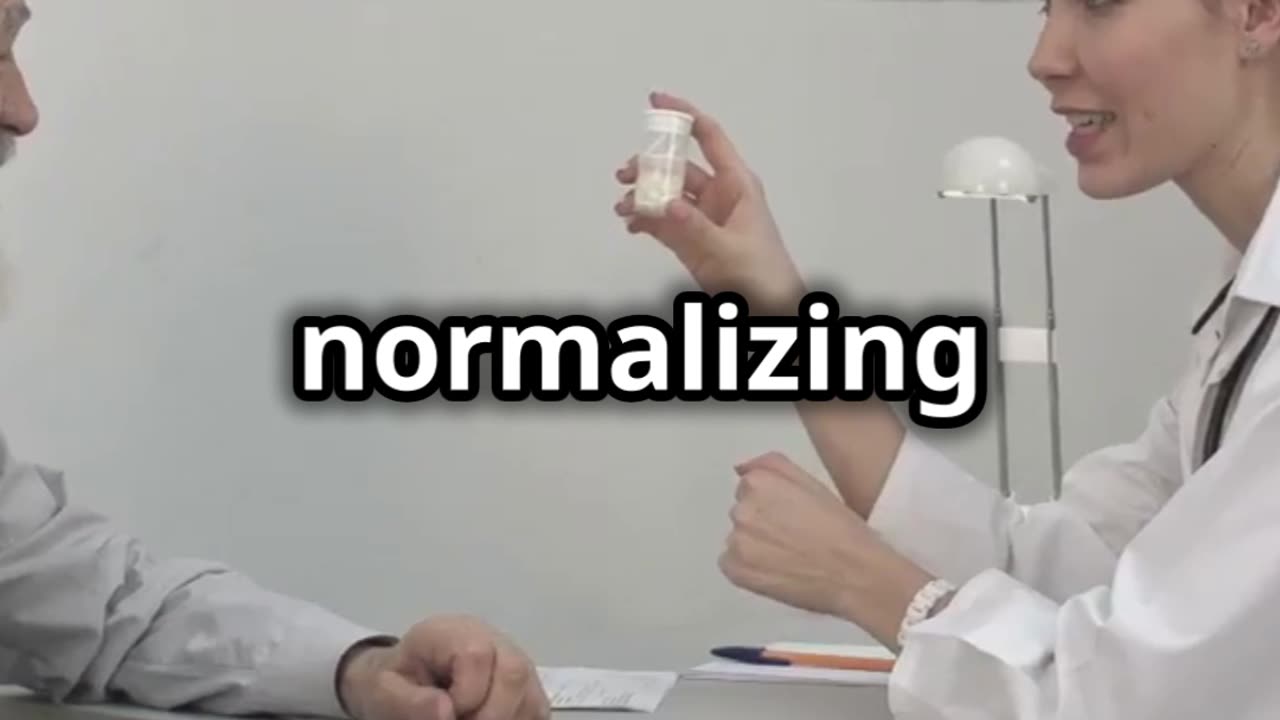Premium Only Content

𝙱𝚎𝚜𝚝 𝚌𝚑𝚎𝚊𝚙 𝚙𝚑𝚊𝚛𝚖𝚊𝚌𝚢 𝚘𝚗𝚕𝚒𝚗𝚎 𝚅𝚒𝚜𝚒𝚝 𝚝𝚑𝚎 𝚜𝚒𝚝𝚎 - https://5pharm.com/?aff=1100
Viagra: A Medical Milestone and Its Impact on Society
Since its introduction in the late 1990s, Viagra—chemically known as sildenafil citrate—has become one of the most recognizable pharmaceutical brands in the world. Originally developed as a treatment for hypertension and angina pectoris, its unexpected side effect led to a revolutionary application: the treatment of erectile dysfunction (ED). Today, Viagra is not only a medical breakthrough but also a cultural phenomenon that has reshaped conversations around masculinity, aging, intimacy, and sexual health. This article explores the origins, mechanism, medical uses, societal implications, controversies, and future of Viagra.
Origins and Discovery
The story of Viagra begins in the early 1990s at Pfizer, a global pharmaceutical company. Scientists were researching a compound called sildenafil citrate as a potential treatment for cardiovascular conditions. The drug was designed to inhibit an enzyme called phosphodiesterase type 5 (PDE5), which plays a role in regulating blood flow. While clinical trials for heart disease showed limited efficacy, male participants reported an unusual and consistent side effect: improved erections.
Recognizing the potential, Pfizer pivoted its research focus. In 1998, after extensive clinical trials confirming its safety and effectiveness for ED, the U.S. Food and Drug Administration (FDA) approved Viagra as the first oral treatment for erectile dysfunction. It quickly became a blockbuster drug, generating over $1 billion in sales within its first year.
How Viagra Works
Erectile dysfunction is often caused by insufficient blood flow to the penis, which can result from physical conditions (such as diabetes, cardiovascular disease, or nerve damage) or psychological factors (like stress or anxiety). Viagra works by enhancing the effects of nitric oxide, a natural chemical the body produces during sexual arousal. Nitric oxide signals the production of cyclic guanosine monophosphate (cGMP), which relaxes smooth muscles in the penile arteries, allowing increased blood flow and facilitating an erection.
Sildenafil inhibits PDE5, the enzyme that breaks down cGMP. By slowing this breakdown, cGMP levels remain elevated longer, sustaining the erection. Importantly, Viagra does not cause spontaneous erections—it only works in the presence of sexual stimulation.
The standard dosage ranges from 25 to 100 milligrams, taken about 30 minutes to an hour before sexual activity. Effects typically last for four to six hours. While generally safe, common side effects include headaches, flushing, indigestion, nasal congestion, and, rarely, vision changes or priapism (a prolonged and painful erection requiring medical attention).
Medical Uses Beyond Erectile Dysfunction
Although best known for treating ED, sildenafil has found other therapeutic applications. In 2005, the FDA approved a lowerdose version of sildenafil under the brand name Revatio for the treatment of pulmonary arterial hypertension (PAH)—a rare but lifethreatening condition characterized by high blood pressure in the arteries of the lungs. By dilating pulmonary blood vessels, sildenafil improves exercise capacity and delays clinical worsening in PAH patients.
Researchers have also explored sildenafil’s potential in other areas, including altitude sickness, Raynaud’s phenomenon, and even certain types of heart failure. While results are promising in some cases, more clinical evidence is needed before widespread adoption.
Societal and Cultural Impact
Viagra’s arrival coincided with broader cultural shifts toward openness about sexuality and aging. Before its introduction, ED was often stigmatized, misunderstood, or dismissed as an inevitable part of aging. Many men suffered in silence, and treatment options were limited to invasive procedures like penile injections or implants.
Viagra changed that narrative. It normalized conversations about sexual health, particularly among older adults, and challenged the notion that sexual desire and function must decline with age. For many couples, it restored intimacy and improved quality of life. The drug also empowered men to seek medical help rather than rely on unproven remedies or suffer in shame.
However, Viagra’s popularity also led to unintended consequences. It became a symbol of virility and youth, sometimes reinforcing unrealistic expectations about male performance. Advertisements often portrayed idealized, active older men, subtly suggesting that sexual prowess equates to masculinity. Critics argue that this commercialization medicalized normal variations in sexual function and contributed to performance anxiety.
Moreover, the drug’s association with recreational use—especially among younger men without ED—raised ethical and safety concerns. Some use it to enhance sexual performance or counteract the effects of alcohol or other substances, despite the lack of medical indication and potential risks.
Accessibility and Generic Competition
For years, Pfizer held an exclusive patent on sildenafil, allowing it to dominate the ED market. However, the patent expired in most countries by the early 2010s, paving the way for generic versions. Today, generic sildenafil is widely available at a fraction of the cost of branded Viagra, increasing access for millions worldwide.
This shift has also intensified competition. Other PDE5 inhibitors—such as tadalafil (Cialis) and vardenafil (Levitra)—offer different durations of action and side effect profiles, giving patients and physicians more options. While this competition benefits consumers, it has also led to a crowded and sometimes confusing marketplace, especially online, where counterfeit or substandard products pose serious health risks.
Ethical and Regulatory Considerations
The rise of online pharmacies has made it easier—but also riskier—to obtain Viagra without a prescription. Regulatory agencies like the FDA and the European Medicines Agency (EMA) have issued repeated warnings about counterfeit drugs containing incorrect dosages, harmful additives, or no active ingredient at all. Public health campaigns now emphasize the importance of purchasing ED medications only through licensed providers.
Another ethical debate centers on the medicalization of sexuality. Some scholars argue that framing sexual difficulties as medical problems requiring pharmaceutical solutions overlooks psychological, relational, and social dimensions of intimacy. They caution against viewing Viagra as a “quick fix” that may distract from deeper issues in a relationship or individual wellbeing.
At the same time, advocates stress that for many men—especially those with chronic illnesses or postprostatectomy ED—Viagra is not a luxury but a vital tool for reclaiming dignity, connection, and selfesteem.
Global Perspectives
While Viagra is widely used in Western countries, its acceptance and availability vary globally. In some cultures, discussing sexual health remains taboo, limiting awareness and access. In others, economic barriers prevent widespread use, even after generic versions became available.
Interestingly, in certain regions, sildenafil has been repurposed in unexpected ways. For example, in parts of Asia, it has been used illicitly in livestock to improve blood flow and meat quality—an illegal and dangerous practice that highlights the drug’s pervasive influence.
Public health initiatives in low and middleincome countries are increasingly recognizing the importance of sexual health as part of overall wellbeing. Integrating ED screening and treatment into primary care—especially for men with diabetes or cardiovascular disease—could yield significant benefits.
The Future of Erectile Dysfunction Treatment
While Viagra remains a cornerstone of ED therapy, research continues into more effective, safer, and userfriendly treatments. Scientists are exploring gene therapy, stem cell treatments, and novel drug delivery systems (such as topical creams or fastdissolving films) that could offer alternatives to oral pills.
Additionally, digital health tools—like telemedicine platforms and mobile apps—are making it easier for men to consult healthcare providers discreetly and receive prescriptions without stigma. These innovations may further democratize access to sexual health care.
At the same time, there is growing recognition of the need for a holistic approach to ED. Lifestyle interventions—such as weight loss, exercise, smoking cessation, and stress management—can significantly improve erectile function and overall health. Combining these with medical treatments often yields the best outcomes.
Conclusion
Viagra’s journey from a failed heart drug to a global icon is a testament to scientific serendipity and human ingenuity. It has transformed the lives of millions, challenged societal taboos, and sparked important conversations about aging, intimacy, and health. While not without controversy or limitations, its legacy is undeniably profound.
As medicine continues to evolve, Viagra may one day be superseded by newer therapies. Yet its impact will endure—not just as a pill, but as a catalyst for change in how we understand and address sexual health. In a world where silence once reigned, Viagra gave voice to a deeply human need: the desire for connection, dignity, and pleasure at every stage of life.
-
 1:26:56
1:26:56
Glenn Greenwald
4 hours agoTrump's War Against Thomas Massie and Rand Paul; Exposing Corrupt Foreign Influence and DC Rot: With Kenneth P. Vogel | SYSTEM UPDATE #535
68.5K47 -
 LIVE
LIVE
MattMorseTV
5 hours ago $10.54 earned🔴Community Hangout🔴
568 watching -
 DVR
DVR
LFA TV
21 hours agoLIVE & BREAKING NEWS! | TUESDAY 10/21/25
172K35 -
 LIVE
LIVE
SpartakusLIVE
2 hours agoHE'S BACK || The #1 KING of Content has ARRIVED
170 watching -
 LIVE
LIVE
SOLTEKGG
41 minutes ago🔴LIVE - BATTLEFIELD 6 BR - Waiting room
40 watching -
 7:55
7:55
Colion Noir
4 hours agoArmed Woman Drags Gunman Out of Store Before Firing Two Shots
21.6K14 -
 LIVE
LIVE
GritsGG
7 hours agoBattlefield 6? Here... We... Go...
28 watching -
 LIVE
LIVE
StevieTLIVE
1 hour agoWarzone Duos w/ Woes
16 watching -
 LIVE
LIVE
Reolock
2 hours agoWoW Classic Hardcore | Ultra Rogue Sneaks onto the Stage!
16 watching -
 1:05:32
1:05:32
BonginoReport
4 hours agoDems' Latest Attempt To Rewrite History BACKFIRES - Nightly Scroll w/ Hayley Caronia (Ep.160)
83K48